Video Review: Rode NT-USB microphone
You get what you pay for in broadcasting, perhaps never more so than with audio gear. Cheap microphones sound like tat – all muffled, indistinct, nasty and horrid. Or at least, that’s the theory.
Rode Microphones have been trying for years to disprove this assumption, with much success. Despite a low price tag, their NTG1, 2, and 3 shotguns are highly regarded in the industry as well as their studio vocal mics such as the NT1-A. Now they’ve taken the technology behind the latter mic and applied it to device designed to be both portable and plug-and-play. It’s called the NT-USB.
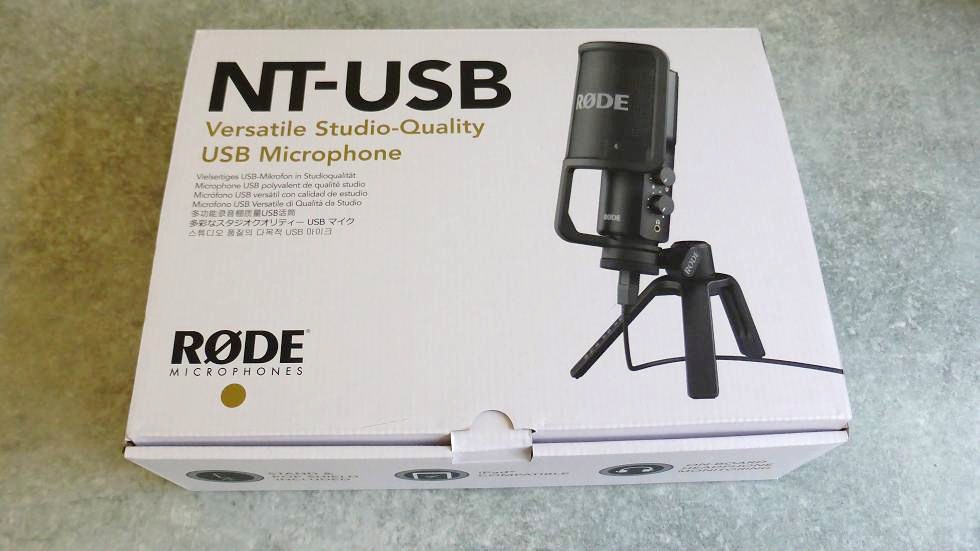
Combining the capsule tech from their studio mics with an inbuilt analogue-to-digital converter and a USB interface creates what Rode say is a top quality mic that you can take anywhere to plug straight into a Mac, PC or even an iPad (with adapter) to record on the go. Yet it retails here in the UK at around £130, aka peanuts in “pro” terms.
So what do you get for the cash and is it any good?
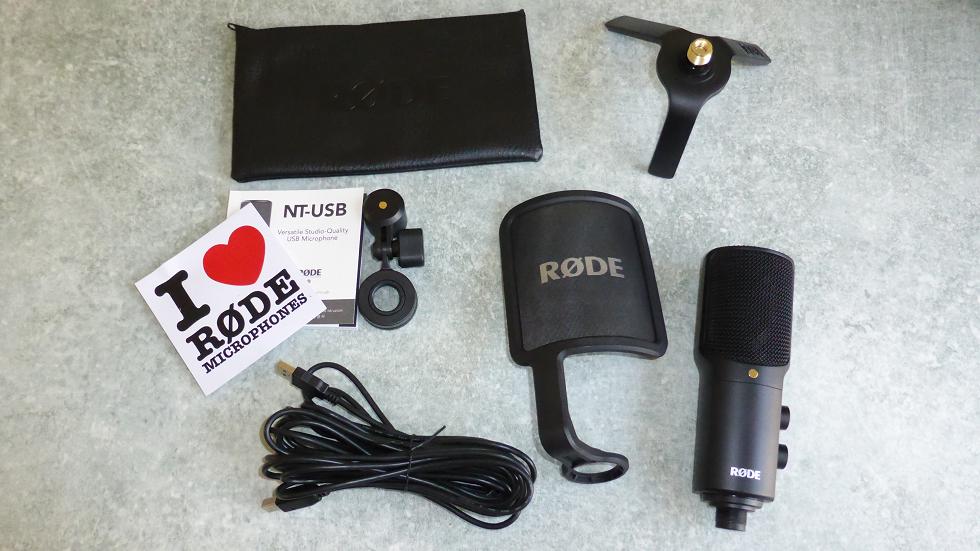
Inside the box there’s the mic itself; a pop filter designed to be fixed underneath the mic as you screw it onto the supplied angle-adjustable mount; a desk tripod; a 6m USB cable; a pouch to keep the mic in, some instructions, and rather cutely, a sticker proclaiming the owner’s love for Rode (actually not as silly as it sounds; many people really do seem to love their Rode gear. Each to their own…)
The mic is surprisingly hefty being constructed of solid metal and not the plastic we must confess that we were expecting. One side is marked Rode and has a metal dot on it, the other states it’s an NT-USB and the country of origin. The labelling is not insignificant as we discovered to our cost – more later.
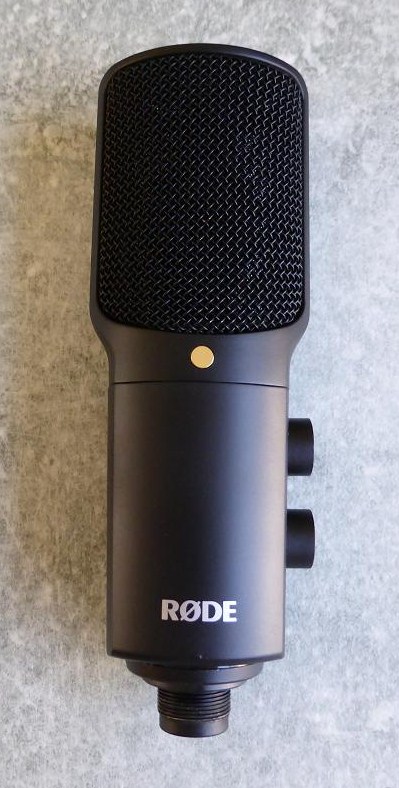
The pop filter is a nice touch and particularly with it being immovable once installed. One of our pet hates with so-called vocal “talent” is their apparent inability ever to stand in front of a microphone without reaching to adjust it, despite them generally having no technical ability or audio understanding whatsoever. This applies both to mics and pop shields on gooseneck stands. Rode’s fixed design means they can’t fiddle and is a very welcome idea (next idea: gooseneck stands that can be locked into place by a key held by the sound engineer…)
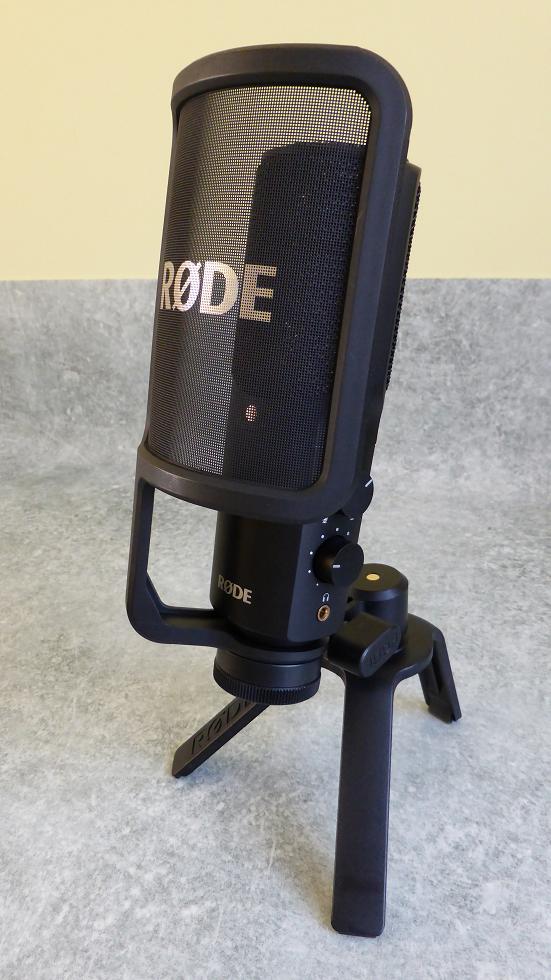
A screw-adjuster enables the mic to tilt backwards for better placement when attached to the supplied mini-desk tripod – ideal for comfortable deskbound podcasting, voiceover recording or, frankly, any other recording task.
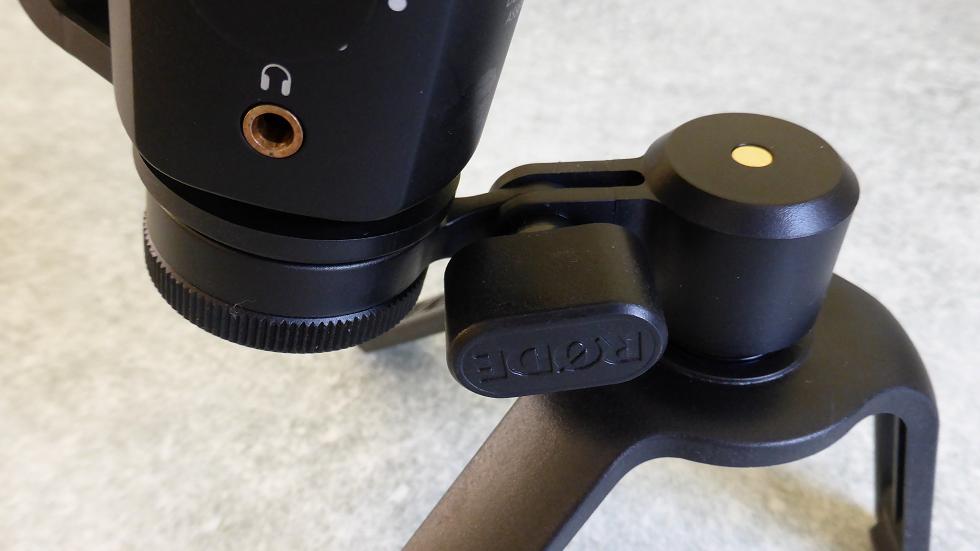
Finally that 6 metre cable means that even if you, like us, have a PC whose internal fans and disc drives make more noise than a hurricane, you can stand well away from it when recording and thereby eliminate any unwanted pickup. In fact, you could even run that cable to a separate vocal booth area. Hmm, that gives us an idea for a project :-)
Plugged into a Mac laptop, the NT-USB simply appeared straight away in the Sound control app and was immediately available for programs to take advantage of. We tried it with the Mac version of Audacity and were easily able to record and adjust levels within the program.
For many people, the mic will be used for music so an ability to hear tracks from the computer whilst simultaneously recording to it is essential. The NT-USB provides for this by offering a 3.5mm headphone socket on the side along with both a volume control and a mix adjustment, which varies the proportion of sound you hear coming from the PC with the sound you’re actually recording, thereby avoiding latency issues.
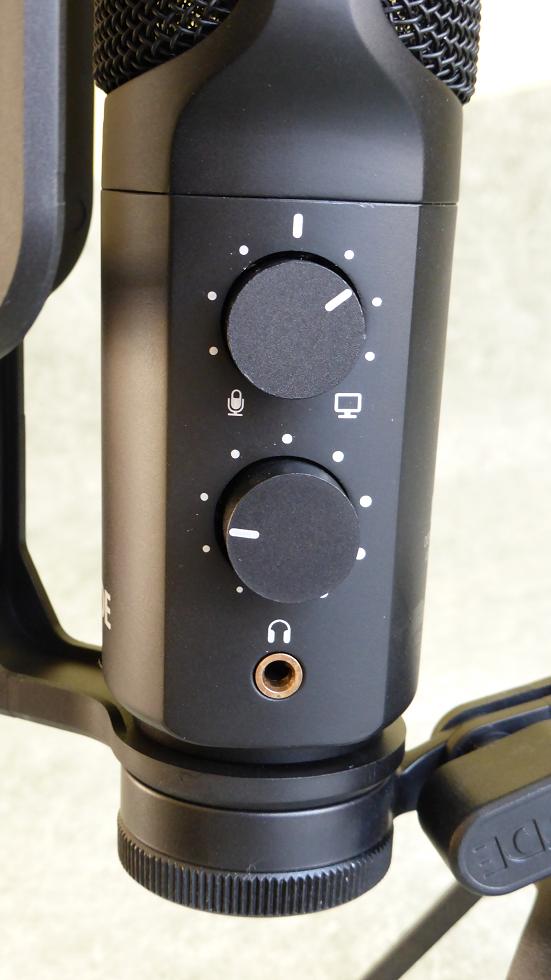
On a PC, there was the usual momentary delay whilst Windows “discovered” a new device and installed driver software but again no problem as the Rode then appeared as an audio device for both recording and playback in our Control Panel.
The only oddity we had, was that our video editing software (Sony Vegas Pro) did not recognise the Rode as a device in its own right, unlike our Presonus Firebox and Blackmagic Intensity Pro. Both of those have their own drivers rather than being generic USB devices which we suspect is the reason.
This meant that to work with the Rode within Vegas, we first had to tell Windows to use the NT-USB as the default sound device then switch Vegas to use the “Windows Default” as its input.
It’s slightly annoying because we don’t want all sounds from the PC going into and out of the mic. We’d rather have our Firebox as the Windows default (which is our usual set up and is connected to our studio mixer) and simply be able to select the NT-USB within Vegas for specific recording tasks but since it’s not seen as a discrete device, this is not feasible it seems.
That issue aside, the recording quality was excellent whether on the Mac or PC. Vocals sound nice and warm and clear and the background noise level, which we must admit we assumed would be awful – was actually very low. Take a listen to the video above and you’ll hear what we mean.
One word of warning though! There is a distinct “front” and “back” to this mic, it’s not a figure of eight pattern round the capsule. Don’t make the idiotic mistake that we did and mount the thing the wrong way round then wonder why the audio sounded so terrible. For a while we thought we were going to have to give Rode some dreadful news. Just make sure the gold dot on the top of the mic is facing you and all will be resolved.
We have bad memories of using USB for audio. Traditionally it would often result in nasty crackles and pops and horrid hiss. Perhaps our experiences are out of date though as the NT-USB was perfectly quiet.
Indeed, we went so far as to compare the quality with a separate (non-USB) mic – a Sennheiser ME66 – plugged into the well-regarded Shure X2U adapter. At a combined retail price of around £450, this could be considered an unfair comparison but the Rode held up incredibly well. The Shure was fractionally, just fractionally, quieter but you’d have to turn the gain up massively and sit very quietly to observe the difference.
All in all then, we are impressed with the Rode NT-USB on two counts: first, the quality is very good. Second, the price is splendidly affordable. We’re not sure what witchcraft Rode are invoking to make these things but shhh, we don’t want to know either. We’re just happy it works so well.
Want to buy the Rode? Please do so via our Amazon affiliate link as that way we get some pennies commission to pay the bills: http://amzn.to/15NQ6J6
Loved this review as this is a Mic I did not know about so thank you very much. Can I just ask what lighting you were using in your office when speaking to camera? I am just starting out and have no idea what lighting to use.
Thanks again.
Hi. Thanks for the query. I think that time I was using an Aputure AL-528W on one side and a 528-LED bicolour LED on the other (sorry, can’t remember exactly which one). Lighting is a minefield with all kinds of options depending on what you want to shoot, so I recommend an awful lot of research!
I’ve watched various youtube reviews raving about this Mic. But I just can’t get past that warranty of only 2 years.
Some other Rode mics have a 10 year warranty period. 10 years!
I also wonder where this mic is manufactured, and whether that has resulted in the reduced warranty period.
Again, unlike some other mics, the Rode website doesn’t specifically say the NT is made in Australia.
As you can probably tell, I’m not a very trusting soul. lol
Interesting points – I’ll email Rode’s press office and see what they say…
Made in China. Says so right on the back of the mic which you can see at 1:47 in the video. I would not be put off by this or the lesser warranty because the price is so nice.